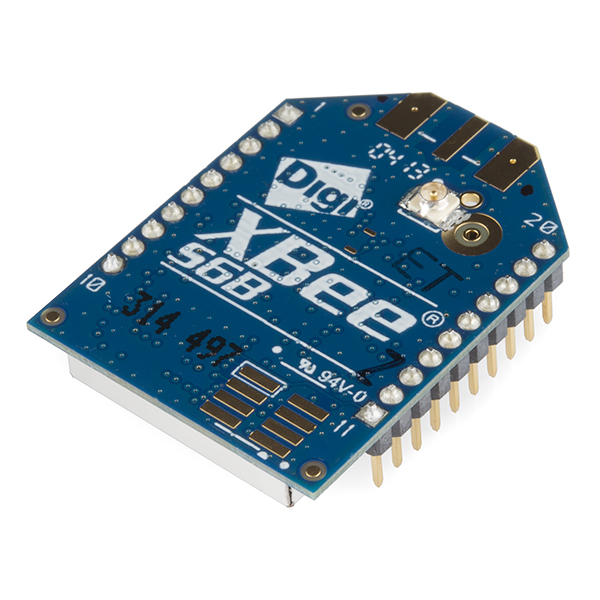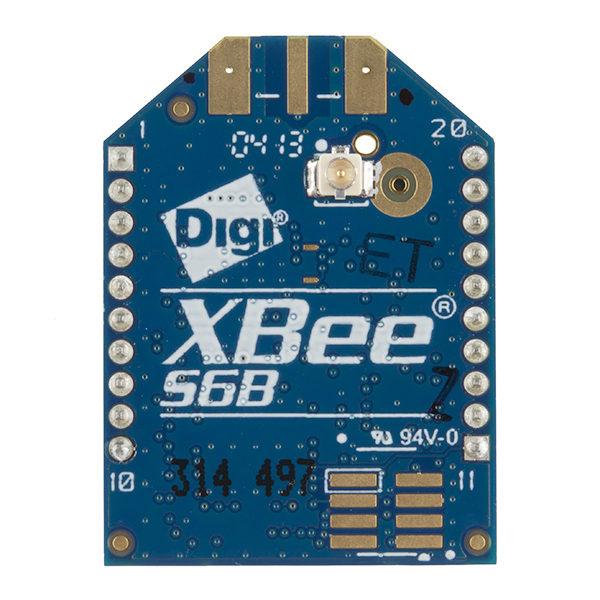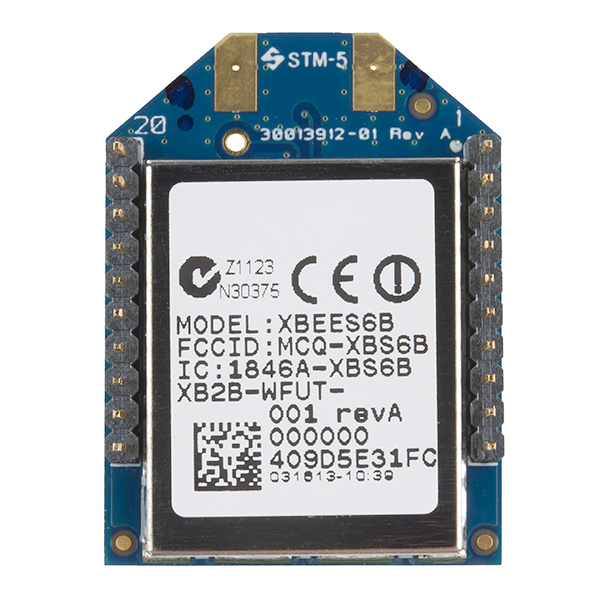XBee WiFi Module - U.FL Connector
This is the XBee WiFi Module with U.FL connector from Digi. XBee WiFi embedded RF modules provide simple serial to IEEE 802.11 connectivity. By bridging the low-power/low-cost requirements of wireless device networking with the proven infrastructure of 802.11, the XBee WiFi creates new wireless opportunities for energy management, process and factory automation, wireless sensor networks, intelligent asset management and more. Focused on the rigorous requirements of these wireless device networks, the module gives developers IP-to-device and device-to-cloud capability.
XBee modules offer developers tremendous flexibility and are available in surface mount and through-hole form factors. The XBee WiFi shares a common footprint with other XBee modules. This allows different XBee technologies to be drop-in replacements for each other.
As a member of the XBee family, the XBee WiFi combines hardware with software for a complete modular solution. XBee WiFi modules are designed to communicate with access points in existing 802.11 infrastructures. Developers can use AT and API commands for advanced configuration options.
Note: If you are using these outside of the United States, please check with your local laws regarding radio communication.
- 3.3V @ 309mA
- 72Mbps Max data rate
- Antenna Type: U.FL
- Fully FCC certified
- 4 12-bit ADC input pins
- 10 digital IO pins
- 13 Channels
- AT or API command set
XBee WiFi Module - U.FL Connector Product Help and Resources
XBee WiFi Hookup Guide
November 21, 2013
An overview of Digi's WiFi XBees, and a quick how-to on getting them connected and interfacing with the cloud.
Core Skill: Programming
If a board needs code or communicates somehow, you're going to need to know how to program or interface with it. The programming skill is all about communication and code.
Skill Level: Competent - The toolchain for programming is a bit more complex and will examples may not be explicitly provided for you. You will be required to have a fundamental knowledge of programming and be required to provide your own code. You may need to modify existing libraries or code to work with your specific hardware. Sensor and hardware interfaces will be SPI or I2C.
See all skill levels
Core Skill: Electrical Prototyping
If it requires power, you need to know how much, what all the pins do, and how to hook it up. You may need to reference datasheets, schematics, and know the ins and outs of electronics.
Skill Level: Competent - You will be required to reference a datasheet or schematic to know how to use a component. Your knowledge of a datasheet will only require basic features like power requirements, pinouts, or communications type. Also, you may need a power supply that?s greater than 12V or more than 1A worth of current.
See all skill levels
Comments
Looking for answers to technical questions?
We welcome your comments and suggestions below. However, if you are looking for solutions to technical questions please see our Technical Assistance page.
Customer Reviews
4 out of 5
Based on 1 ratings:
Good for interaction between robots
We are beginning to use this module for communication between marine surface robots and a shore station. It provides a good support for cooperative operations like boom towing.





Looks like you can create an ad hoc network with an updated firmware so you can use these without the need of a wifi network. => http://www.digi.com/support/forum/36219/wifi-xbee-module-ad-hoc-network.
Here are some tutorials that I found online:
http://todigi.blogspot.com/2012/08/xbee-wifi-in-ad-hoc-mode.html
http://tutorial.cytron.com.my/2014/02/14/xbee-wifi-in-soft-ap-mode/
Check the manual for more information = > http://www.digi.com/products/wireless-wired-embedded-solutions/zigbee-rf-modules/point-multipoint-rfmodules/xbee-wi-fi#docs.
Can someone tell me if this will work without an attached antenna? I accidentally purchased this instead of the embedded antenna version and time constraint prevents exchanging through Sparkfun... D'oh. Would RadioShack have the appropriate antenna attachment?
is it possible to send data from one of these to a service listening on the port the data is sent on? I cannot for the life of me get any data to end up where it's going. I'm transmitting frames to a socket listening on the same port its sending from and i get nothing, not even a connection.
Hey guys, I want to solder this onto a PCB that I have designed, but I also want to still be able to reprogram it. Can this be programmed in circuit? Would it work if I just connect the proper pins to an xbee explorer but leave everything else still connected to other things? Thanks!